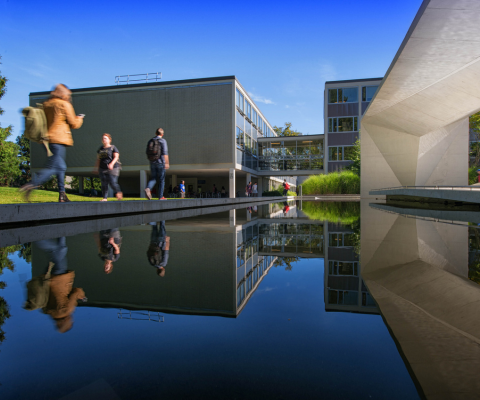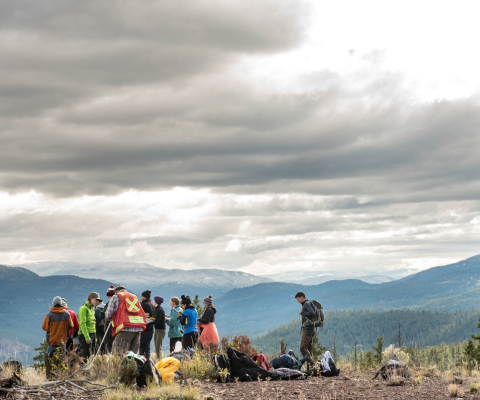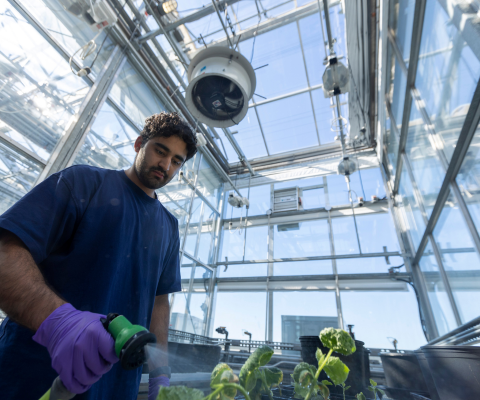Environmental benefits to come from investments in university infrastructure

This op-ed was published in The Hill Times on March 15th, 2021
By Paul Davidson, president and CEO of Universities Canada
A year of social distancing has given many of us a closer look at where our homes could use an upgrade — a leaky tap wasting water, a drafty window sending heat outside, a furnace that rumbles through the night. Picture that on a much larger scale where a campus is home to thousands of students, faculty and researchers.
Ensuring uninterrupted higher education in a pandemic took some doing. Digitally enabling classrooms and labs opened the door for quality remote learning. It will also provide flexible opportunities for upskilling and reskilling into the future. Universities got the job done, but COVID-19 has exposed many cracks in the system and made even clearer what infrastructure needs must be addressed right now and in preparation for the return to face-to-face classes.
This is the time to get it right, to build back with an eye to further greening while improving accessibility and digital infrastructure.
The aging out of buildings that went up during periods of rapid growth in the ‘60s and ‘70s, cuts to operating budgets in several provinces and increased construction costs have all contributed to an urgent need. Administrators have focused constrained budgets on the excellence in higher education our economy demands. In recent months, priorities, rightfully turned to responding to the pandemic, have put physical supports for higher education even further behind. We can’t keep ignoring the metaphorical noise in the basement. At the same time, we can’t ignore the ache of the planet and the imperative to do better and more in response to climate change.
Universities need federal government support for green infrastructure initiatives to reduce the carbon footprint of campuses across Canada.
The 50-year-old library at the University of Winnipeg for example needs work. Plans include upgrades to windows, the roof and boilers to improve energy efficiency. The project will reduce energy demand and carbon emissions by 50 per cent and will significantly reduce the university’s carbon footprint.
Saint Mary’s University in Halifax needs to replace its aging steam boiler. A conversion will reduce Saint Mary’s greenhouse gas emissions by more than 580 tonnes a year. That’s like taking 125 cars off the road. It will also enable future carbon reduction.
McMaster University in Hamilton has been waiting to revitalize the Life Sciences Building. A retrofit will solve barrier leaks, thermal bridging and roof leaks. The project brings an aging building in line with current standards.
Projects like these need funding.
There are about $7 billion worth of “shovel-ready” projects on campuses across Canada. Half are dedicated to green infrastructure and energy efficiency.
The benefits of funding them go well beyond campus. A 2016 federal postsecondary education infrastructure program created more than 37,000 jobs across Canada. In just one example from that program, the University of Calgary retrofitted buildings resulting in a $1.1 million a year savings in utility costs. A similar 2009 program reduced carbon emissions by 175,791 tonnes per year throughout Canada, the equivalent of emissions from more than 34,000 vehicles.
Good, reliable facilities help attract and keep the best faculty, researchers and students from around the world. Add state-of-the-art research facilities and we attract the brightest talent to spur economic growth, address labour market gaps and produce the high-impact research needed to solve issues that matter to Canadians.
As structural maintenance that addresses our responsibility to the planet gets underway, universities will also take the opportunity to improve accessibility. Experiencing university without physical limitations is a reminder of the ongoing need to enhance accessibility on campus. Now is the time to ensure that entrances, doorways, washrooms and equipment are suitable for all learners. That might also include more digital support – providing equitable access to online and in-class learning for students with visual, auditory and other disabilities.
We know the way. Carleton University, for example, is the first university in Canada to adopt the Rick Hansen Foundation’s Accessibility Certification program. Carleton will go beyond the building code and look at space and programming with an eye to further eliminating barriers. Other universities are examining their own standards similar commitments.
The barrier universities face to doing all of this is funding.
Universities are calling on the federal government to reinvest up to $7 billion to the Post-Secondary Institutions Strategic Infrastructure Fund.
We applaud the Government of Canada’s recent $.5 billion investment delivering on a 2018 announcement to support research labs and equipment. A financial injection to infrastructure that will generate environmental benefits is a remedy worth administering.
Whether it has resulted in quick response to a health crisis, equipping graduates for a changing economy or building international research partnerships, government investment in universities has always delivered benefits. With the right support to improve infrastructure, universities could deliver tangible economic and environmental results in every region of Canada. They are ready now.
About Universities Canada
Universities Canada is the voice of Canada’s universities at home and abroad, advancing higher education, research and innovation for the benefit of all Canadians.
Media contact:
Lisa Wallace
Assistant Director, Communications
Universities Canada
[email protected]
Tagged: Environmental sustainability, Research and innovation




